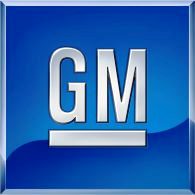I was at a luncheon of dinosaurs the other day, perhaps I should say for dinosaurs, retired auto industry top-drawers, and happened to be sitting next to a one-time GM executive who shall be nameless.
Naturally, we got to talking about GM’s Government Motors status, its rapid CEO turnover and the impending new Initial Public Offering of stock. This won’t really be GM’s first offering of stock, since founder Billy Durant wheeled and dealed for financing and takeovers back in the early years of the last century—but rarely if ever approached the general public.
Anyway, our conversation turned to how the 800-pound Gorilla of Detroit automakers came to such hard times. We agreed it wasn’t from excessive costs running the company into bankruptcy two years ago, or even from import and transplant automakers gnawing away at market share from behind their protected home markets over the last couple of decades.
We identified four basic long-ago GM stumbles that eventually led to its falling flat on its keister, as the Great Communicator used to say. Here I’ll share them with you, for other dinosaurs to debate endlessly, or perhaps to simply nod their heads in agreement:
- Toward the end of the roller coaster Seventies, General Motors turned to corporate engines to fill consumer thirst for V8s. But someone forgot to nudge Oldsmobile to quit hawking its engine trademark “Rocket” – which referred back to the sensational Rocket high-compression OHV V8 that changed Olds from a sluggish stodge to a racer’s delight with 1949 Olds 88 models. So a litigious buyer of a new Olds sued the General, claiming he’d been misled when he discovered his 350-cid V8, which he assumed for the sake of the lawsuit was a “Rocket”–had been manufactured by Chevrolet, not Oldsmobile. Though Ford and Chrysler for years had been using “corporate engines”—not identified with a particular brand– the media happily harangued GM for the oversight of not having a disclaimer. GM not only lost the suit but Olds’ and General Motors’ reputations plunged aplenty at a time when the Olds Cutlass had been one of the best selling models in the industry.
- All too soon after this fiasco, Oldsmobile—known as GM’s home for new technology since the 1940-model introduction of Hydra-matic—decided to try to “dieselize” its 350-cid gasoline car engine to help meet the recent Congressional “corporate average fuel economy” (CAFÉ) mandate. Yes, this diesel option in Olds (and some Cadillacs) offered superior fuel economy—when it was not in the shop. Somehow, Olds engineers simply hadn’t modified their familiar V8 block enough to withstand the higher internal pressures of diesel combustion. Olds and GM reputations went further into the tank. Arguably, this flawed product disaster has been a major factor discouraging anyone else from ambitious diesel car engine intros in the U. S.
- Right after that stumble, Cadillac prematurely adopted the 2-4-6-8 concept of cylinder disengagement, again to help meet CAFÉ demands. Electronics had not matured sufficiently to make the now-accepted and widely applied concept work. Cadillac owners loudly squawked about their engine problems, as well they should have. Alienating an owner body that the rest of the world envied was just one more nail in GM’s coffin. My tablemate attributed the three engine failures, of which only two were technical, to the fact GM’s president in those years was “an engine man” whose vision, um, was narrow.
- The fourth, and undoubtedly most visible, stumble was the terrible styling of GM cars beginning with the 1980 models, boxy and look-alike regardless of nameplate. Lincoln capitalized on this with a clever TV commercial poking fun at GM in a make-believe valet parking sequence: the motorist orders up his Cadillac and the parker first brings him a Chevy, then a Pontiac, then an Olds—well, you get the idea. Then another motorist comes out and orders up his distinctive Lincoln Town Car. Beauty of course is in the eye of the beholder, but GM’s boxy, squarish designs of the time were turn-offs for the heretofore faithful who had treasured GM’s long-time design supremacy. If nothing else, it paved the way for Ford’s successful “jelly bean” look, epitomized by the 1986 Taurus/Sable. My tablemate attributed this GM stumble to a “manufacturing guy” president who wanted maximum component interchangeability among GM’s five car divisions—economically desirable but not well-executed.
This isn’t a fifth stumble, but I think most GM lifers believe the dissolution of GM’s car divisions in the Eighties destroyed the unique management, engineering, manufacturing, sales and marketing, reputation and esprit de corps strengths on which the divisions had always depended. You have to remember, all those separate GM car divisions—Chevrolet, Pontiac, Oldsmobile, Buick and Cadillac–had begun as independent companies before being swept into the Corporation, an important legacy. Even though the consolidation was inevitable, it can be argued that GM lost its greatest strength therein.
You decide—or debate. What were the most telling factors in GM’s downfall? Moreover, what can a team of former Telecom and Wall Street execs do to put Humpty Dumpty back together again? Could a reborn GM drive Toyota, Honda and Hyundai into the sea, like it overcame Ford’s dominance in the 1920s? We’ll just have to wait and see.

